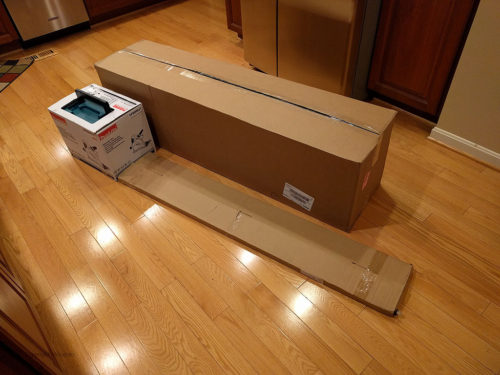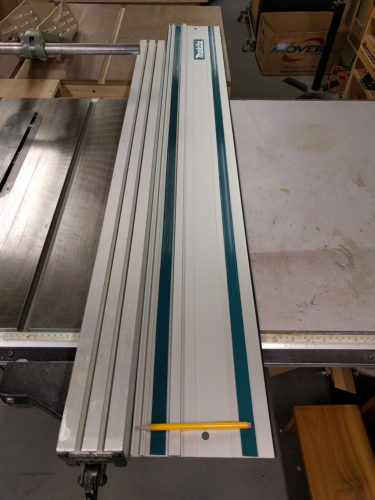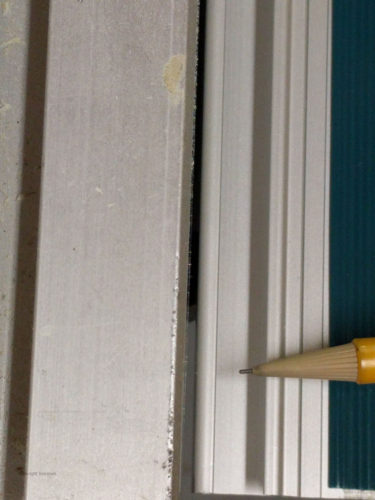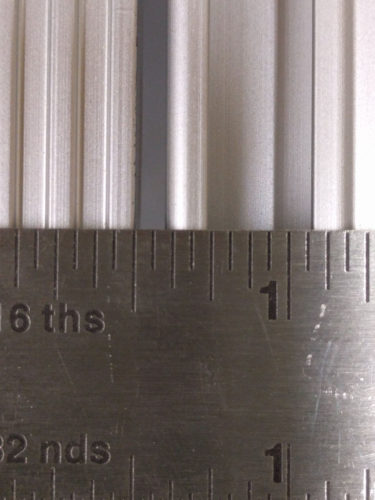I recently purchased a Makita track saw to help cut some panels for cabinets that I was planning to build. Before buying the saw, I read a number of online reviews and concluded that this product offered the best bang for the buck, especially if one is not a full-time carpenter/woodworker. In terms of cutting performance and features, it compared favorably to the Festool and Dewalt track saws and seemed like a relative bargain at $400 for the saw plus a 55″ guide rail. The same package from Festool goes for $660 while Dewalt’s is $470.
My only concern was that some owners complained that the guide rail was not straight and they had to go through the hassle of returning it – sometimes 2 or 3 times – in order to get a satisfactory replacement. These warped rail complaints go back several years and I figured that surely Makita must have realized that there was a quality control issue and would have taken appropriate steps to correct it. Surely. Heh, heh…
As soon as I removed the guide rail from the packaging, I could tell it was curved just by sighting down the length of it with my naked eye. When I laid it next to my arrow-straight rip fence, the curve was even more obvious.
With one end of the rail pressed against the rip fence, the other end curved out by about 1/8″. The saw runs along the raised track in the middle of the rail which, of course, was also curved. This may be acceptable to some people who just want to rough cut plywood into more manageable chunks but I suspect most people (myself included) that plunk down hundreds of dollars on a track saw are expecting a precision tool that can make finish quality cuts. I think we can all agree that a minimum requirement in a track saw is having a track that is straight and flat. Otherwise, what’s the point? It really irks me that Makita is selling track saws with bad tracks.
I purchased the track saw package from Amazon and decided to contact them about returning the defective rail. I online chatted with an Amazon person who said I could do a partial order return and he generated the return slip for me. But the slip clearly stated that it was for the saw with guide rail (which was listed as a single item in my original order). I think the chat guy was stating that I could return individual items in a multi-item order rather than individual components of a single order item. I asked several times for clarification about just returning the rail but he just kept repeating his mantra that I could do a partial order return. At this point, I realized the easiest thing would be to just return the whole package so that’s what I did. Amazon was paying for the return shipping so it was no skin off my nose. But I did have to go through the hassle of repacking the “item” and dropping it off at a local UPS store. I never even got around to trying out the saw.
After returning the track saw, I considered just ordering another saw without the rails and separately ordering a Festool rail, which is compatible with the Makita and doesn’t suffer from the same quality control issues (i.e., their rails are flat and straight). But the rail alone costs $136 so now I was looking at laying out almost $500. That seemed a bit excessive and unnecessary. And I wasn’t keen on ordering another Makita rail and “hoping” that it would be straight. So, what did I do you ask?
I bought the Dewalt track saw package which included 59″ and 102″ rails for $620 on Amazon. I’m happy to report that both rails were straight! I opted for this double rail package because a number of track saw reviewers recommended getting the longer rail for ripping large panels rather than having to splice together two shorter tracks. Reportedly, the longer track makes the task easier and provides a better quality of cut.
The Dewalt has a few other advantages over the Makita that helped to sway my purchase decision. It comes with a longer cord (13 feet vs 8 feet) – this makes a difference when ripping large panels, it has a riving knife to prevent kickback when cutting solid wood, and it’s depth adjustment is marked in inches rather than millimeters (kind of important to folks who live in the U.S). Note that all of these Makita deficiencies have been mentioned many times by various reviewers/owners. The Dewalt also allows you to cut along both sides of the rail, thereby extending the life of the rubber anti-splinter strips.
I realize that there are plenty of Makita track saw owners that are happy with the product but sadly, I’m not in their ranks. And all because of a crooked rail experience. Makita, if you’re reading this, here’s my humble advice: fix the quality control issues with your rails AND address the other deficiencies noted above. If you can do that and keep the price about where it is, I think you’ll sell a crap-ton of track saws. Nuff said.





